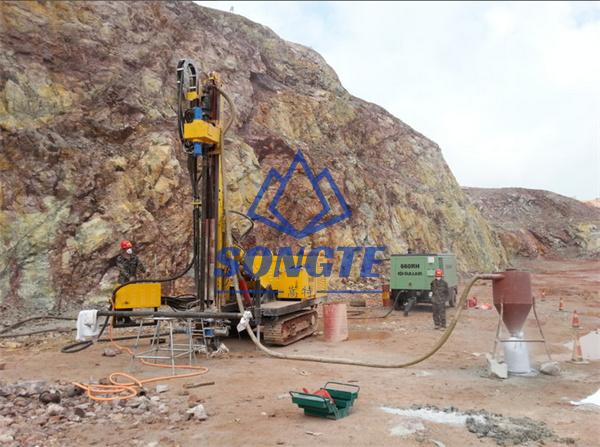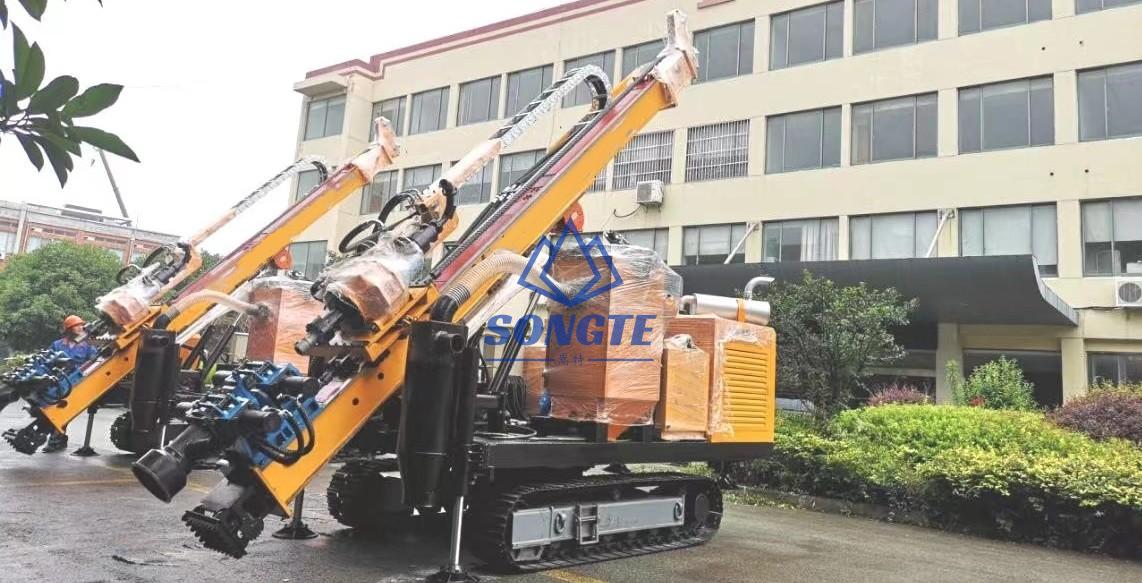How does RC drilling rig work? Understanding the inner workings of RC Drilling rigs
Introduction:
RC drilling rigs have become a vital tool in the exploration and extraction of mineral resources around the world. Utilized extensively in the mining and oil industries, these rigs offer efficient and accurate drilling capabilities. In this article, we will delve into the inner workings of RC drilling rigs, exploring the key components and the process involved in their operation.
What is RC Drilling?
Reverse Circulation (RC) drilling is a drilling method widely employed in exploration drilling and mineral resource extraction. It involves the use of compressed air to drive a drilling bit, which in turn pulverizes the rock and transports the cuttings to the surface through the inner tube of the drill rods.
Multifunctional Hydraulic RC Drilling Rig For Collecting Cutting Samples

The Key Components:
Drill Bit: The drill bit is an essential component that cuts into the ground or rock formations. It is often made of strong tungsten carbide or diamond inserts to withstand the abrasion and impact of drilling.
Drill String: The drill string comprises a series of connected drill rods that transmit torque and axial force to the drill bit. These rods are made of high-strength steel to withstand the stress of drilling.
RC Hammer: The RC hammer, connected to the drill string, is responsible for delivering compressed air and rotational force to the drill bit. It contains a piston and a set of check valves that ensure efficient air circulation and facilitate the retrieval of drilling samples.
Cyclone Separator: As the cuttings and air reach the surface, they enter a cyclone separator. This device uses centrifugal force to separate the cuttings from the air. The cuttings are collected in sample bags or trays for further analysis, while the air is released.
The Operation:
Set-up: The RC drilling rig is positioned at the desired drilling location. The rig typically consists of a mast, which supports the drill string, and an engine that provides power to drive the rig’s various components.
Start Drilling: The drill string, equipped with the drill bit and RC hammer, is lowered into the borehole. The engine powers the rotation of the drill string, and compressed air is supplied to the RC hammer.
Drilling Process: As the drill bit makes contact with the rock formations, the compressed air delivered through the RC hammer assists in breaking the rock. The pulverized cuttings are transported to the surface through the inner tube of the drill rods.
Sample Retrieval: The cuttings and air reach the cyclone separator. The air, now separated from the cuttings, is released into the atmosphere. The cuttings are collected and carefully examined for mineral content and other geological information.
Depth Control: The drilling process continues as the drill string is gradually extended by adding additional drill rods. Depth control is maintained by monitoring the length of the drill string and the progress of drilling.
Multifunctional Hydraulic RC Drilling Rig For Collecting Cutting Samples

Conclusion:
RC drilling rigs have revolutionized the exploration and mining industries with their efficiency and accuracy. By employing compressed air to drive the drill bit and transport cuttings to the surface, these rigs allow for effective sampling and analysis of mineral resources. Understanding the inner workings of RC drilling rigs is crucial for professionals in the field, enabling them to harness the power of this drilling technique to uncover valuable resources beneath the Earth’s surface
 songtemachine
songtemachine
